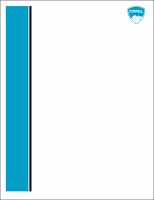Please use this identifier to cite or link to this item:
https://hdl.handle.net/11681/12119| Title: | Collaborative study of soils spiked with volatile organic compounds |
| Authors: | U.S. Army Environmental Center Hewitt, Alan D. (Alan Dole) Grant, Clarence L. |
| Keywords: | Hazardous waste Vapors Vapor fortification Quality control Volatile organic compounds Soils Soil pollution Soil testing |
| Publisher: | Cold Regions Research and Engineering Laboratory (U.S.) Engineer Research and Development Center (U.S.) |
| Series/Report no.: | Special report (Cold Regions Research and Engineering Laboratory (U.S.)) ; 95-3. |
| Description: | Special Report Abstract: Vapor fortification is a method of spiking soils with volatile organic compounds (VOCs) that was recently developed for producing materials suitable for performance evaluation and quality assurance/quality control (QA/QC). Using this treatment method, soil subsamples enclosed in heat-sealed glass ampoules were distributed to 16 laboratories for a collaborative round-robin study. The sample sets consisted of duplicates of three different soils. Each soil subsample had been vapor-fortified with the following VOCs: trans-1,2-dichloroethylene (TDCE), trichloroethylene (TCE), benzene (Ben) and toluene (Tol). The laboratories were requested to report analyte concentration estimates for these four analytes and any other detected organic compounds after performing a methanol extraction, purge-and-trap gas chromatography, mass spectrometry analysis. The results from the 12 laboratories that met all of the design criteria produced a range of relative standard deviations from 8.5 to 28.2%, with a pooled standard deviation of less than 13%. The smallest range of consensus values was for Ben (pooled RSD = 9.0%), while the determination of TDCE showed the greatest overall uncertainty (pooled RSD = 20.3%). This round-robin effort confirmed that the use of vapor-fortified soils sealed in glass ampoules is a precise way of preparing and storing VOC-spiked soil subsamples. |
| Rights: | Approved for public release; distribution is unlimited. |
| URI: | http://hdl.handle.net/11681/12119 |
| Appears in Collections: | Special Report |
Files in This Item:
| File | Description | Size | Format | |
|---|---|---|---|---|
| SR-95-3.pdf | 78.5 kB | Adobe PDF |  View/Open |